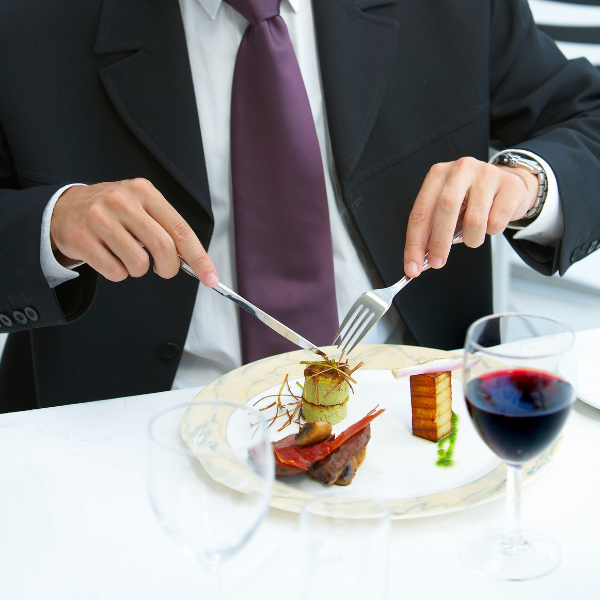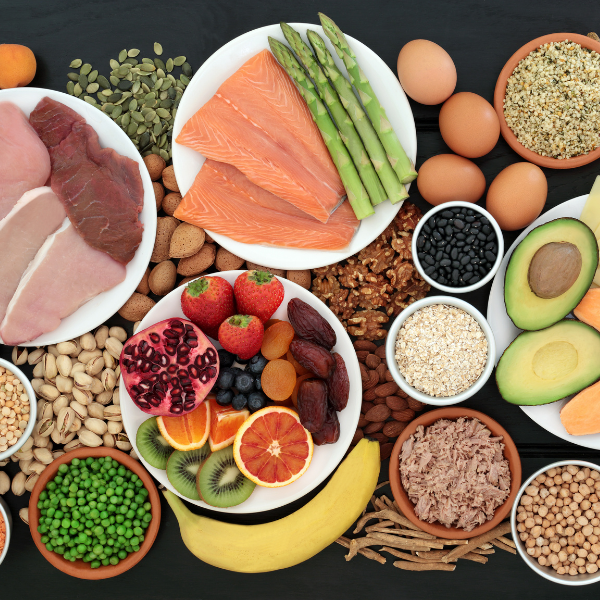A pop-up restaurant is an exhilarating venture for culinary entrepreneurs, offering a unique platform to test innovative dining concepts without the commitment of a permanent space. This dynamic dining phenomenon allows chefs and food enthusiasts to showcase their creativity, from exotic cuisines to avant-garde dining experiences, in temporary locations ranging from bustling city rooftops to quaint countryside spots. As we dive into this guide, we'll walk you through the essential steps of launching your own pop-up restaurant. From conceptualizing a magnetic theme that captivates your target audience, selecting an ideal location that complements your vision, to crafting a menu that tells a captivating story, we're here to pave the path to your pop-up's success.
How Are Pop-Up Restaurants Related To Restaurant Management?
Starting a pop-up restaurant is closely related to restaurant management as it involves fundamental principles such as menu planning, food preparation, and culinary skills. The temporary nature of pop-ups requires a unique and appealing menu, careful execution of dishes, and a specific culinary theme to attract customers within a limited timeframe.
Pop-up restaurants also necessitate adept operational management, reflecting broader aspects of restaurant management. This includes logistics, staffing, customer service, and financial management. Coordinating ingredient sourcing, managing a temporary kitchen setup, overseeing a team, and implementing effective marketing strategies are crucial for success, showcasing the practical application of restaurant management skills in a dynamic and time-constrained environment.
Concept Development and Planning
Concept development and planning are foundational stages crucial for the success of your pop-up restaurant. During this phase, meticulous attention to detail ensures a memorable and cohesive dining experience. Here's a breakdown of key considerations:
- Thematic Clarity: Clearly define your restaurant color scheme and concept, ensuring that the theme is distinctive and resonates with your target audience. The theme should guide all aspects of the pop-up, from decor to menu offerings.
- Comprehensive Planning: Develop a comprehensive plan that covers every aspect of the pop-up, including venue selection, layout, staffing requirements, and logistical considerations. This detailed planning ensures a smooth execution during the limited timeframe.
- Customer Journey: Envision the customer journey from arrival to departure, considering factors such as ambiance, service flow, and engagement. Aim to create a seamless and immersive experience aligned with your pop-up concept.
- Flexibility: Remain flexible in your planning to adapt to unforeseen challenges or opportunities. A degree of adaptability allows you to navigate changes smoothly and maintain the quality of the pop-up experience.
- Collaborative Team Approach: Foster collaboration among your team members, ensuring that everyone understands and contributes to the overall vision. Effective communication and teamwork are essential for successfully bringing the concept to life.
Menu Development And Sourcing
Menu development and sourcing are pivotal aspects of launching a successful pop-up restaurant. Consider the following guidelines:
- Theme Integration: Align your menu seamlessly with the pop-up theme, ensuring that each dish contributes to the overall concept and enhances the novelty of the dining experience.
- Limited Yet Impactful Offerings: Opt for a concise menu that highlights your culinary strengths and maintains a sense of exclusivity. Focus on delivering a few standout dishes that leave a lasting impression.
- Local And Seasonal Sourcing: Embrace local and seasonal ingredients to infuse freshness and uniqueness into your menu. This not only enhances flavor but also adds an element of authenticity to your pop-up concept.
- Adaptability: Stay flexible in sourcing ingredients, considering the temporary nature of a pop-up. Be prepared to make adjustments based on availability, ensuring that your menu remains dynamic and responsive to market conditions.
- Collaboration With Suppliers: Establish strong relationships with suppliers to secure reliable sources for your ingredients. Communicate your specific needs and timelines to ensure a smooth and efficient sourcing process.
Essential Products For A Pop-Up Restaurant
Transform your pop-up restaurant into a stylish and eco-friendly haven by choosing the right products. Elevate aesthetics and functionality, ensuring a memorable dining experience for your patrons.
Disposable Tableware
Opt for stylish disposable plates and bowls to add a touch of elegance to your pop-up restaurant's dining experience. Choose bamboo plates or palm leaf bowls for a sustainable and visually appealing option that aligns with your eco-friendly goals.
Drinkware
Serve a variety of beverages with our disposable cups designed for different drink options. Prioritize sustainability with our eco-friendly and compostable drinkware, aligning with the growing demand for environmentally conscious choices.
Napkins And Placemats
Create a polished and cohesive look for your pop-up restaurant tables using linen-feel napkins and placemats. Simplify your setup while maintaining elegance by focusing solely on these elements.
Picks And Skewers
Ensure easy serving and eating with disposable picks and skewers that cater to the practical needs of a pop-up environment. Incorporating picks and skewers of various sizes allows for versatility in presentation, ensuring you're equipped to elegantly serve everything from small appetizers to substantial kebabs.
How To Train Your Staff For A Pop-Up Restaurant?
Staffing and training are critical components in the successful execution of a pop-up restaurant. Here's a concise guide to navigating these aspects:
- Strategic Staffing: Carefully determine the staffing needs based on the scale and nature of your pop-up. Ensure you have a well-balanced team, including chefs, servers, and support staff, to deliver a seamless dining experience.
- Skill Match: Match staff skills with the specific requirements of your pop-up concept. From culinary expertise to customer service skills, each team member should contribute to the overall success of the venture.
- Efficient Training: Provide focused and efficient training to your staff, emphasizing the unique elements of your pop-up concept. This includes menu knowledge, service standards, and any specific roles each team member will undertake.
- Adaptability: Given the temporary nature of a pop-up, emphasize adaptability in your staff training. Equip your team to handle unforeseen challenges and changes, ensuring they can maintain a high level of performance throughout the pop-up period.
- Team Communication: Foster clear and open communication among your staff. A well-coordinated team enhances efficiency and contributes to a positive working environment, ultimately benefiting the customer experience.
How To Market And Promote Your Pop-Up Restaurant?
Effective marketing and promotion are essential to creating buzz and attracting patrons to your pop-up restaurant. Here are some strategies to implement to ensure a higher likelihood of success:
- Strategic Branding: Develop a cohesive and compelling brand identity that aligns with your pop-up concept. This includes a distinct logo, color scheme, and messaging to create a memorable impression.
- Digital Presence: Leverage online platforms to create anticipation. Utilize social media channels, a dedicated website, and online promotions to reach your target audience and build excitement.
- Collaborations And Partnerships: Explore collaborations with influencers, local businesses, or relevant partners to extend your reach. Cross-promotions can enhance visibility and attract a broader audience.
- Limited-Time Offers: Emphasize the exclusivity and temporality of your pop-up through limited-time offers, promotions, or unique experiences. This scarcity can drive a sense of urgency among potential customers.
- Engagement Strategies: Foster engagement with your audience through interactive content, contests, or behind-the-scenes glimpses. Building a connection before the pop-up opens can enhance the overall experience for customers.
Operations And Service
Smooth operations and exemplary service are crucial to the success of your pop-up restaurant. Let’s explore your to streamline your operation logistics to create a standout experience:
- Efficient Logistics: Streamline operational logistics, including kitchen setup, supply chain management, and equipment preparation. A well-organized operation ensures a seamless and efficient workflow during the pop-up period.
- Staff Coordination: Foster clear communication and coordination among your staff to maintain a smooth service flow. Clearly define roles and responsibilities to avoid bottlenecks and ensure a positive dining experience.
- Quality Control: Implement rigorous quality control measures to maintain consistency in food preparation, presentation, and overall service. Consistency contributes to positive customer reviews and enhances the reputation of your pop-up.
- Customer-Centric Approach: Prioritize a customer-centric approach in service delivery. Train staff to be attentive, responsive, and accommodating, creating a positive and memorable experience for patrons.
- Adaptability: Given the dynamic nature of a pop-up, instill adaptability in your operations and service approach. Equip your team to handle unforeseen challenges, ensuring a high level of service throughout the limited duration.
Financial Management
Financial management is a critical aspect of successfully operating a pop-up restaurant. Here's a concise guide to effectively manage your financial operations to maximize profitability and mitigate potential challenges:
- Budgeting: Develop a comprehensive budget that covers all aspects of your pop-up, including concept development, staffing, marketing, and operational expenses. Regularly track actual spending against the budget to ensure financial discipline.
- Expense Tracking: Maintain a meticulous record of all expenses, from ingredient costs to marketing expenditures. This detailed tracking provides clarity on where your money is going and helps identify areas for potential cost savings.
- Revenue Monitoring: Implement a robust system for tracking revenue, whether through sales records, point-of-sale systems, or other financial tools. Regularly analyze revenue data to gauge the financial health of your pop-up.
- Profitability Analysis: Assess the profitability of your pop-up by analyzing the relationship between revenue and expenses. Identify your most profitable menu items and marketing channels to optimize resource allocation.
- Cash Flow Management: Manage cash flow effectively to ensure that you have the necessary funds to cover immediate expenses. Monitor payment cycles, negotiate favorable terms with suppliers, and have contingency plans for any cash flow challenges.
- Financial Reporting: Generate regular financial statements, including income statements, balance sheets, and cash flow statements. These reports offer a comprehensive overview of your pop-up's financial performance and inform strategic decision-making.
Gathering Feedback And Adaptation
Actively gathering feedback and embracing a mindset of adaptation can fine-tune your pop-up restaurant's offerings and operations. Let's discover how to enhance the overall customer experience and enhance the likelihood of long-term success:
- Customer Feedback: Actively seek and collect feedback from customers regarding their dining experience. Utilize comment cards, online surveys, or social media to gather insights into what worked well and areas that may need improvement.
- Staff Input: Encourage feedback from your staff, as they play a pivotal role in the daily operations. Their insights can provide valuable perspectives on efficiency, customer interactions, and potential areas for enhancement.
- Performance Analysis: Regularly review key performance indicators, such as sales data, customer satisfaction scores, and inventory turnover. Analyzing these metrics helps identify trends and areas where adjustments may be necessary
- Adaptation Strategies: Based on feedback and performance analysis, be prepared to adapt your pop-up concept, menu, or operational processes. Flexibility is essential to address evolving customer preferences and optimize overall efficiency.
- Continuous Improvement: Cultivate a culture of continuous improvement where feedback is seen as an opportunity for growth. Implement changes thoughtfully and communicate them transparently to your team and customers.
Closure And Evaluation
Systematically closing and evaluating your pop-up restaurant, helps to gather essential insights that contribute to your growth and success in future culinary endeavors. Here are some tips on how to operate:
- Scheduled Evaluation: Plan a systematic evaluation of your pop-up restaurant's performance. Set specific intervals for assessment, such as the end of each week or month, to review key metrics and gather insights.
- Financial Assessment: Conduct a thorough financial evaluation, comparing actual revenue and expenses against projections. Identify areas of overspending or potential cost savings and assess the overall profitability of the venture.
- Customer Feedback Review: Aggregate and analyze customer feedback received throughout the pop-up's duration. Identify common themes, positive aspects, and areas for improvement. This input is invaluable for future ventures.
- Staff Debriefing: Hold a debriefing session with your staff to gather their perspectives on what worked well and areas that could be enhanced. Their firsthand experiences provide valuable insights into the operational aspects of the pop-up.
- Concept Reflection: Reflect on the original concept and theme of the pop-up. Assess its reception among customers and whether adjustments were necessary. Consider the feasibility of incorporating elements of the pop-up concept into future endeavors.
- Closure Planning: If applicable, plan the closure of the pop-up restaurant. This includes settling outstanding bills, informing staff, and managing inventory. Ensure a smooth and organized closure to leave a positive final impression.
- Documentation: Document key learnings, successes, and challenges. This documentation serves as a valuable resource for future endeavors, allowing you to build on the experience gained during the pop-up.
Savoring Success
Starting a pop-up restaurant is an exciting venture that requires careful planning, strong restaurant management skills, and a passion for culinary excellence. By following these steps and embracing the challenges and opportunities that come your way, you can create memorable dining experiences and build a reputation in the culinary world. Whether your pop-up is a stepping stone to a permanent restaurant or a recurring culinary adventure, it has the potential to leave a lasting impression on diners and fellow chefs alike.














